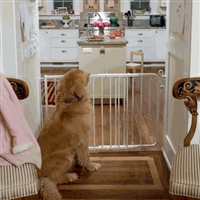How to Pet Proof Your Home
(This article was posted by The Animal Doctor Blog
http://www.anmldrblog.com/pet-proof-your-home/)
I like this information and wanted to share it
As a pet owner, can you remember the excitement you had when you first acquired your pet? Can you remember all the preparation that went into bringing your pet home? You wanted to make sure you had the right food, bedding, toys, etc. Also, you wanted to make sure you found the right veterinarian to take care of your new addition to your household. A common preparation that is often overlooked is whether the home is pet proof. Why is it important to pet proof your home? What is involved in pet proofing your house? Below we will discuss some tips on how to pet proof your home.
Why pet proof your home?
Of all the emergencies that are seen, one of the most common cases are poisoning or ingestion of a toxin. Many times these toxins are common household items. So if you can protect your pets from these toxins, you can reduce chances that you will need to take an unexpected trip to the emergency visit.
What needs to be done to pet proof your home?
The easiest way to determine how to pet proof your home is to breakdown the potential dangers that can occur in each room. Below we will look at each room in a typical household.
Kitchen
The kitchen is a popular place for a family to enjoy a meal together. But it is also a place that can harbor potential dangers for your pet. One of these dangers is food. Common foods that can cause major issues with your pet includes baking chocolate, onions, grapes, raisins, and caffeine. Garbage cans full of discarded food can prove to be dangerous. Besides food, there are common household cleaners that can also be a danger. So it is important that these items are secured properly. Avoid leaving food out for a curious pet to get in contact with and secure all garbage cans. You should also keep cabinets doors locked. Pet Feeders
Laundry room
This room is a common area where your pets can get in contact with items used to clean the laundry. It can be common for dogs to ingest fabric softener sheets and detergent pods which can cause serious digestive issues. So it is important that these items are kept far out of reach of your pets.
Bathroom
Since this is a room where medications are commonly stored, pets can be exposed to prescription and OTC meds alike. Childproof caps are no match for sharp teeth. So it is important to keep these up high and out of reach. Other dangers include bathroom cleaners. A common issue is toilet bowel cleaners that are placed in the tank since it is common for dogs to like to lick out of the toilet bowl. That is why it is important to keep the toilet bowl closed after using it or not using those extended toilet bowl cleaners if you have a pet. Get your pet a Crate Bed
Living room
Many people don’t think of their living room as being a dangerous place for pets but it can be based on the set up and their behavior. Certain plants such as sago palm, easter lilies and Dieffenbachia can cause issues. So double check your plants you have in your house before bringing in a pet. If your pet has a tendency to eat unusual things, then they may go for a remote control and get in contact with batteries. So keep those out of reach.
Garage
The garage is one of the most dangerous places for dogs especially if you have a car parked in the area. Antifreeze leaking from a car can be deadly for a dog if ingested. The garage is also a common storage area for other potential toxic items such as gas and paint. So if you are deciding to keep your pets in the garage, make sure they don’t have access to any of those things.
Yard
Before bringing that pet home, it is important that you survey it for any potential hazards. Plants are a common issue with pets so look for any toxic plants and make sure they are removed. Make sure you don’t have any pest bait outside. It is also important to make sure that your fencing is secure. Pets often escape from poorly secured fences leading to increased risk for being hit by a car. Here are some options for Pet Fences
In conclusion
As you can see it is important to pet proof your home for the safety of your pets. It also allows you to avoid an expensive trip to the emergency room. What should you do if your pet gets poisoned? The first thing you should do is call your veterinarian. If your veterinarian is not open, then you should call pet poison hotline. Another option you have is to check with an online veterinary consulting website such as JustAnswer . Whatever you decide it will be important that you act quickly.


Comments
Post a Comment